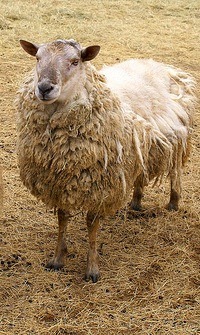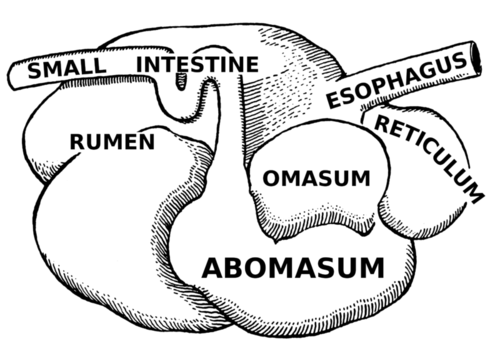What is rennet? Rennet separates curds from whey. If you didn’t know already, this is the most important process in cheese making. Once the whey is separated from the curds, the curds are processed (either by stretching, cheddaring, washing, etc.), and then ripened in order to create what we know as cheese. So, now that we know it is really important to the cheese making process, let’s find out where it comes from…
Rennet is made from renin, which is an enzyme found in the stomach lining of ruminant animals. Yeah, I know, you have no idea what a ruminant animal is. Just assume I’m talking about typical barnyard animals (cattle, goats, and sheep), which produce the milk that we consume; as well as, some unexpected critters such as alpacas, antelope, bison, camels, deer, elk, giraffes, llamas, moose, nilgai, pronghorn, water buffalo, and yaks.


The above is a drawing of the stomach structure of a ruminant. Notice how big the rumen is and know that food spends the majority of its time being broken down here. This is from where the renin is extracted. According to Wikipedia, the term “ruminant” actually comes from the Latin word ruminare, which means to chew over and over again.
Cheese made with rennet obtained from animals will usually be indicated on the label as “traditional rennet” or just “rennet.” It is also probably safe to assume, that if the cheese label does not say anything about vegetarian or microbial rennet, the cheese is most likely made in the “traditional” way: with animal rennet—there are some exceptions (e.g. acid-set cheeses probably wont say anything about rennet because they are not made with rennet).
So, you’re a vegetarian…
Being a vegetarian, you are already keenly aware that there are a ton of foods that you simply cannot eat. Luckily, and most likely in response to the growing popularity of vegetarianism, more and more cheese makers are using vegetable-derived rennet.
Vegetable rennet is produced from certain plants, which have properties that coagulate milk. I think the most popular vegetable rennets are derived from enzymes found in thistle, phytic acid from unfermented soy beans or genetically modified soy beans, but they also use fig tree bark and mallow.
There are a handful of cheeses where the milk is coagulated by adding citric acid. This type of cheese is actually referred to as acid-set. Some examples of acid-set cheeses are cream cheese, cottage cheese, Paneer, Raejuusto, and Rubing.
So you’re keeping kosher…
According to Jewish dietary laws, one cannot mix meat and dairy—in this case, the meat being the lining of the cow’s stomach.
Most kosher cheeses are made with microbial rennet which is either fungi or bacteria which produce an enzyme that coagulates milk. However, if you are not someone who eats genetically modified foods, then you are probably going to want to stay away from cheeses made with microbial rennet; many—but certainly not all—of microbial rennets have been engineered in labs using genes from calves in response to a shortage about thirty years ago.
Keep in mind that cheese makers are not required to disclose the source of the rennet they use in production, so if you have complicated dietary needs, you will need to be vigilant when reading food labels.